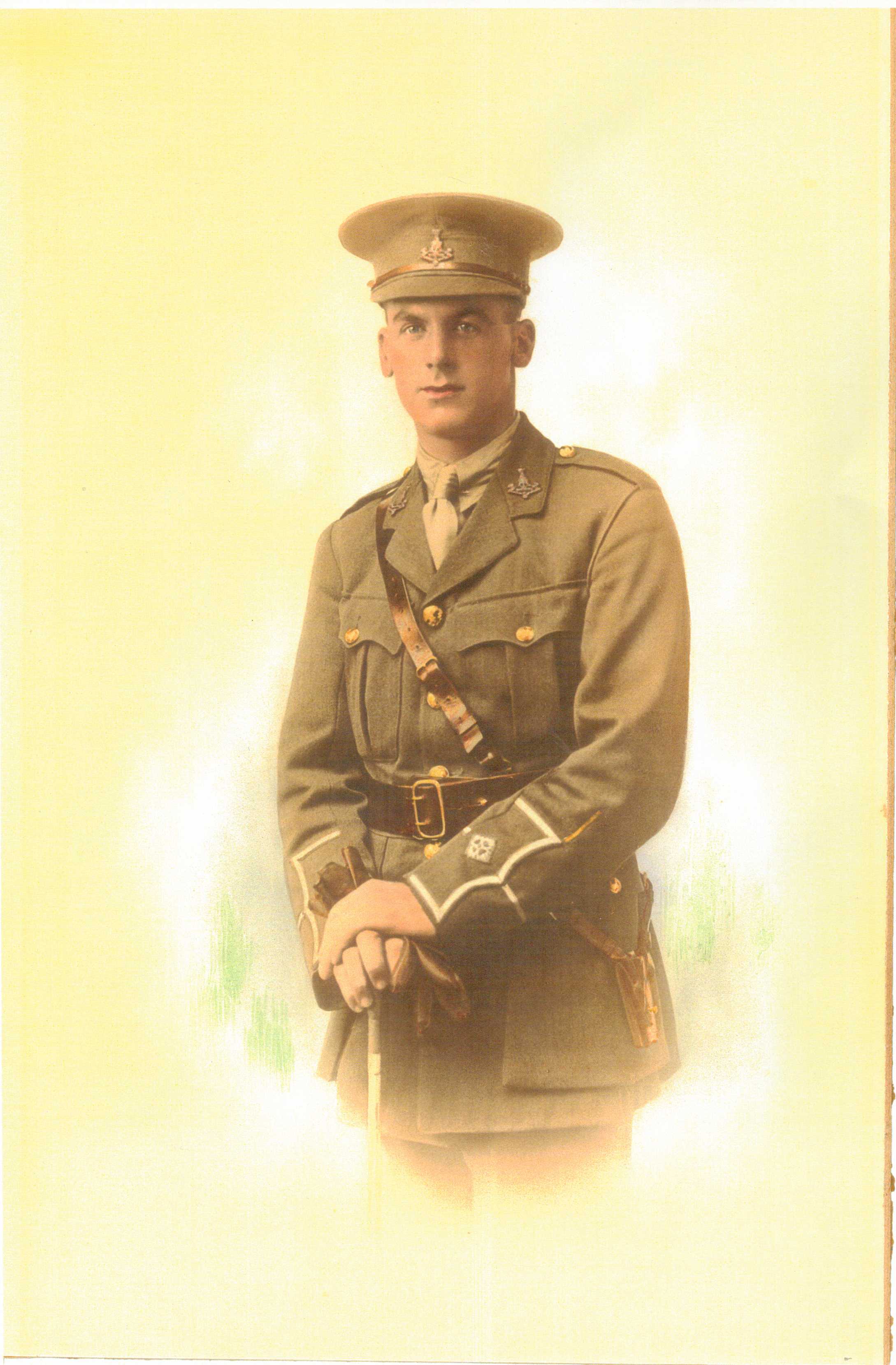
Information submitted by Mark Tovey, William Buckle is Mark’s wife’s great uncle.
William Buckle was born in Middlesbrough. In 1914 he was a 21-year-old clerk working for a well-known Middlesbrough steel company. The war was 4 weeks old when he, like many other young men from North Yorkshire, went to Northallerton to join their local Territorial Army Battalion – 4th Battalion, The Yorkshire Regiment (4th Green Howards).
On 16 April 1915, 4th Green Howards were ordered to Belgium. On 22nd April the German Fourth Army attacked the Allied front line in the North of the Ypres Salient and, using poison gas for the first time, threatened Ypres itself. This was a crisis and, despite their inexperience, 4th Green Howards went straight to the fight. For the next month the Yorkshiremen were in almost continual action, suffering many casualties. Private William Buckle was one of the Battalion’s 200 casualties. He had been shot twice, in the right shoulder and hip. He spent the next 2 months recovering before, as a corporal, training Green Howard recruits in Northallerton.
Surprisingly, after his wounds healed, he volunteered for one of the most dangerous jobs in the Army – as a platoon commander. After a 4½ month course at an Officer Cadet Battalion at Denham, Buckinghamshire, Buckle was granted a commission as a Temporary Second Lieutenant in July 1916. The following month he was posted to 8th Green Howards. Buckle served on the Somme through the fierce battles of that summer and autumn until his battalion was ordered north to the Ypres sector in October.
In May 1917 the Battalion occupied trenches in the Hill 60 sector, about 3.5km SE of the Ypres City walls. On 7 June at 3.10 am, following the detonation of 2 huge mines under the German trenches on Hill 60, the 8th Green Howards assaulted and captured their objectives. The fighting during that hot summer’s day, cost 8th Green Howards with 37 men killed and 218 men wounded or missing.
Second Lieutenant William Buckle was wounded and evacuated to a Casualty Clearing Station (CCS) at Remy Sidings where he died. He was 24. He is buried in Lijessenhoek Military Cemetery.
Explore more memories from the ribbon
-
Joseph Whitwell Bainbridge
Information submitted by Mrs Audrey Grundy. Joseph Whitell Bainbridge was born in 1896, his family ran Bainbridge’s Drapers Shop in Richmond Marketplace. Which occupied the building where Penley’s stands today. He was a territorial solider with the 4th battalion of the Yorkshire Regiment prior to the outbreak of the First World War and appears to have rejoined as a volunteer with the same battalion after the conflict started. Joseph arrived in France with the 4th battalion on 18 April 1915. His territorial regimental number (2370) was later revised to 200533. His war service led to the award of the 1915 Star, the British War medal and the Victory medal. Joseph’s older brother, Thomas Lawrence Bainbridge (also of the Yorkshire Regiment) was killed during the Battle of Arras on 23 April 1917. He had been awarded the Military Medal for bravery in the field.
-
Albert Clifford
Submitted by Marcia Howard, a resident of Richmond. Albert William George Clifford was my maternal Grandfather born at Chipping Sodbury, Gloucestershire in 1886. Prior to his medical discharge in 1916, he was serving in Malta with No.1 Coy, of the Royal Garrison Artillery as a Gunner. He was subsequently presented with the Silver War Badge which in September 1916, King George V had authorised to honour all military personnel who had served at home or overseas since 4 August 1914, and who had been discharged because of wounds or illness. Following his return home to his wife and 2 small children in Gloucestershire, he became Chauffeur to the local doctor, where he also contributed to the recruitment drive popularly known as ‘Your Country Needs You’.
-
Gardner Kennedy
Helen Bennett visited the museum to tell us about Gardner Kennedy. (William Robert) Gardner Kennedy was my paternal Irish Grandmother’s first cousin. He was the son of Mary and William Kennedy of Ardbana House Coleraine, Northern Ireland. His father had an engineering firm. He was my Irish Grandmother’s cousin. (Annie Morton McMillan of Turnagrove Co Antrim) There is a very strong familial likeness between Gardner Kennedy and his Turnagrove cousins, most of whom I knew. Gardner Kennedy died on the Swaben Redout on July 1st 1916 which is where his regiment the Royal Iniskilling Fusiliers fought Reg no:18637. Lance Corporal, Machine Gun Corps (Infantry) 1st Battalion Royal Inniskilling Fusiliers. He has no known grave and is remembered on the Thiepval Memorial, and on the Coleraine War memorial, although on the latter his Christian name is incorrectly spelt. He enlisted on 5th October 1915. His brother, Lieutenant John Alexander Kennedy, survived the war. However further tragedy struck the family on 2nd March 1917 when the Kennedy family lost their only daughter, Mary Boddie, wife of Geoffrey W Boddie. Comment: About 1959 or 1960 I visited Edie Kennedy who (I presume) was Gardner Kennedy’s sister law at Ardbana House, a splendid detached house full of faded elegance. I met Jack, Edie’s son who was a wild child, liked building his own racing cars. Of Edie, I remember only a little old lady, shrunken but lively, sitting regally amongst the faded and cluttered Second Empire furniture in front of a huge fireplace with…
